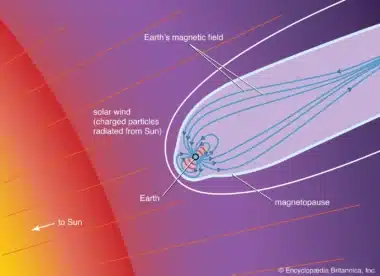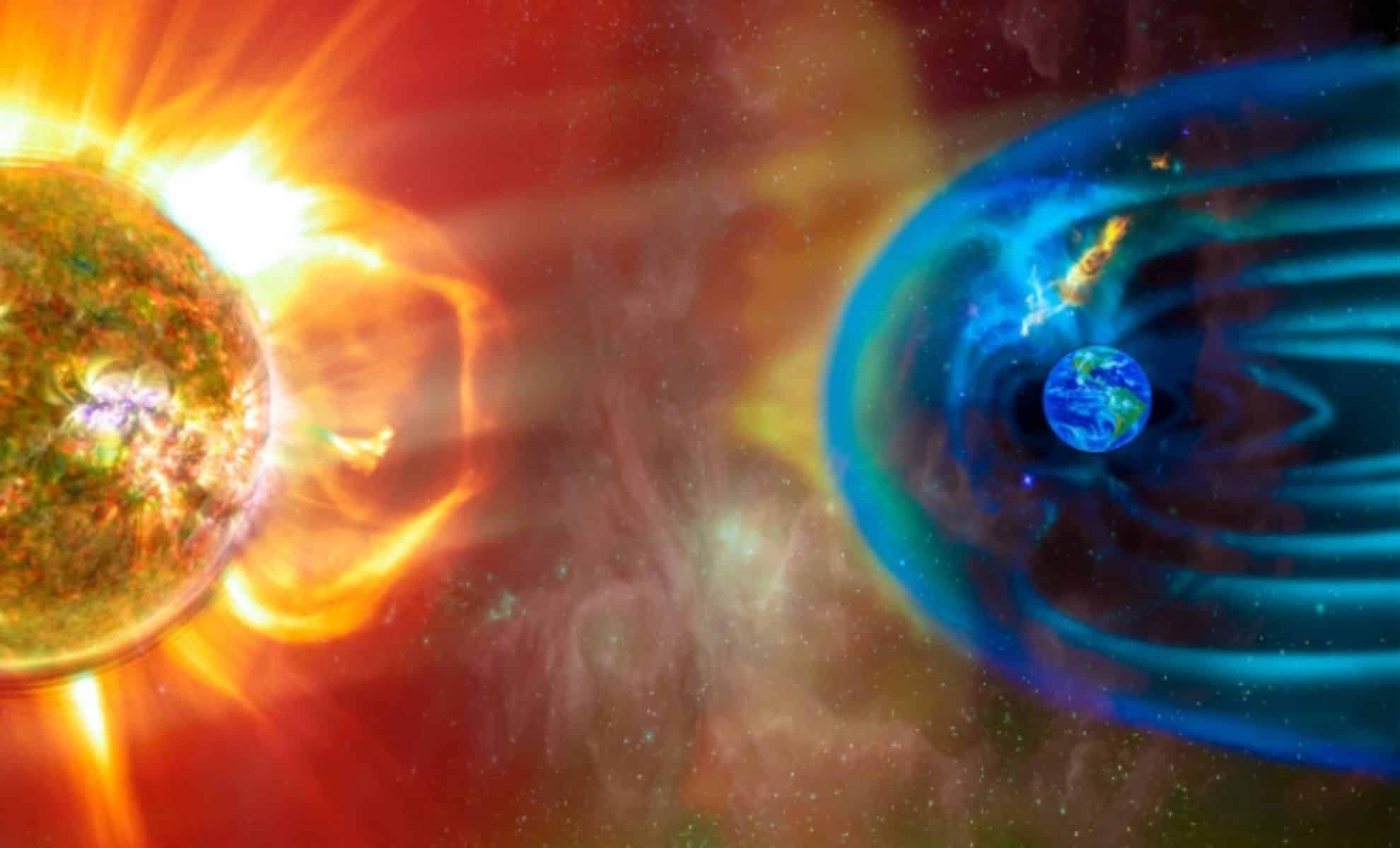Recent studies have pointed to the catastrophic potential of extreme solar flares, especially when combined with a weakened magnetic field.
These phenomena, which occur roughly every thousand years, can significantly disrupt the Earth’s ozone layer, which has serious consequences for all life on our planet.
The protective role of the Earth’s magnetic field
Earth’s magnetic field acts as a decisive shield that deflects charged particles from the Sun and protect the planet from harmful radiation. Normally, this field acts like a gigantic bar magnet, with field lines rising from one pole and looping around the other, forming a protective cocoon.
However, the strength and stability of this magnetic field is not constant. Over the past century, the north magnetic pole has moved across northern Canada at a rate of about 40 kilometers per year, while the overall field strength has decreased by more than 6%.
The geological record indicates a period when the geomagnetic field was very weak or even completely absent. During these times Earth’s atmosphere and surface are more vulnerable solar radiation. Current understanding of these protective dynamics allows scientists to assess the potential impacts of extreme solar events on Earth’s environment and life forms.
Impact of extreme solar flares
Solar particle events are discharges of energy, mainly protons, emitted from the Sun. These events are often associated with solar flares and can reach lower altitudes Earth’s atmosphere.

While hundreds weak solar particle events occur every solar cycle (about every 11 years), extreme solar particle events are much rarer but much more powerful. Records indicate that such extreme events occur roughly every few millennia, with the most recent occurring around 993 AD.
When these extreme solar particle events occur, they can damage the ozone layer for up to a year, allowing harmful ultraviolet (UV) radiation to penetrate the Earth’s surface. Increased UV radiation can damage DNA in all life forms, inhibit plant growth and disrupt photosynthesis. For humans, health risks include an increased risk of skin cancer, cataracts, and impaired immune function.
Researchers from ETH Zürich and other institutions, writing Conversation, emphasized the seriousness of these events: “These bursts of protons directly from the surface of the Sun can shoot like a searchlight into space.” This radiation, if not deflected by a strong magnetic field, can have dire consequences.
Consequences of a weakened magnetic field
The potential damage is even more significant if an extreme solar particle event coincides with the period when the Earth’s magnetic field is weak. Under such conditions, ozone depletion could last nearly six years, increasing UV radiation levels by 25% and increasing DNA damage rates by up to 50%. This scenario poses a serious threat to global agriculture and natural ecosystems, leading to increased mutations and likely triggering a period of rapid evolutionary change.
One historical example of this a deadly combination occurred about 42,200 to 41,500 years ago, a period when an extreme solar event likely occurred that affected hunter-gatherer groups and may have contributed to the disappearance of the last Neanderthals.
Evolutionary implications and historical precedents
Connection between solar activity, geomagnetism and evolutionary change is evident in several historical events. The Cambrian explosion about 539 million years ago saw a rapid diversification of animal life, potentially driven by increased UV radiation due to a weakened magnetic field. Similarly, the disappearance of Neanderthals and megafauna extinction in Australia around 42,000 years ago may be related to solar particle events and weakened geomagnetic shielding.
Scientists continue to investigate these connections to understand how solar activity shaped the history of life on Earth. As research progresses, it is becoming increasingly clear that extreme solar flares combined with a weakened magnetic field pose a significant threat to the stability of Earth’s environment and the health of its inhabitants.
